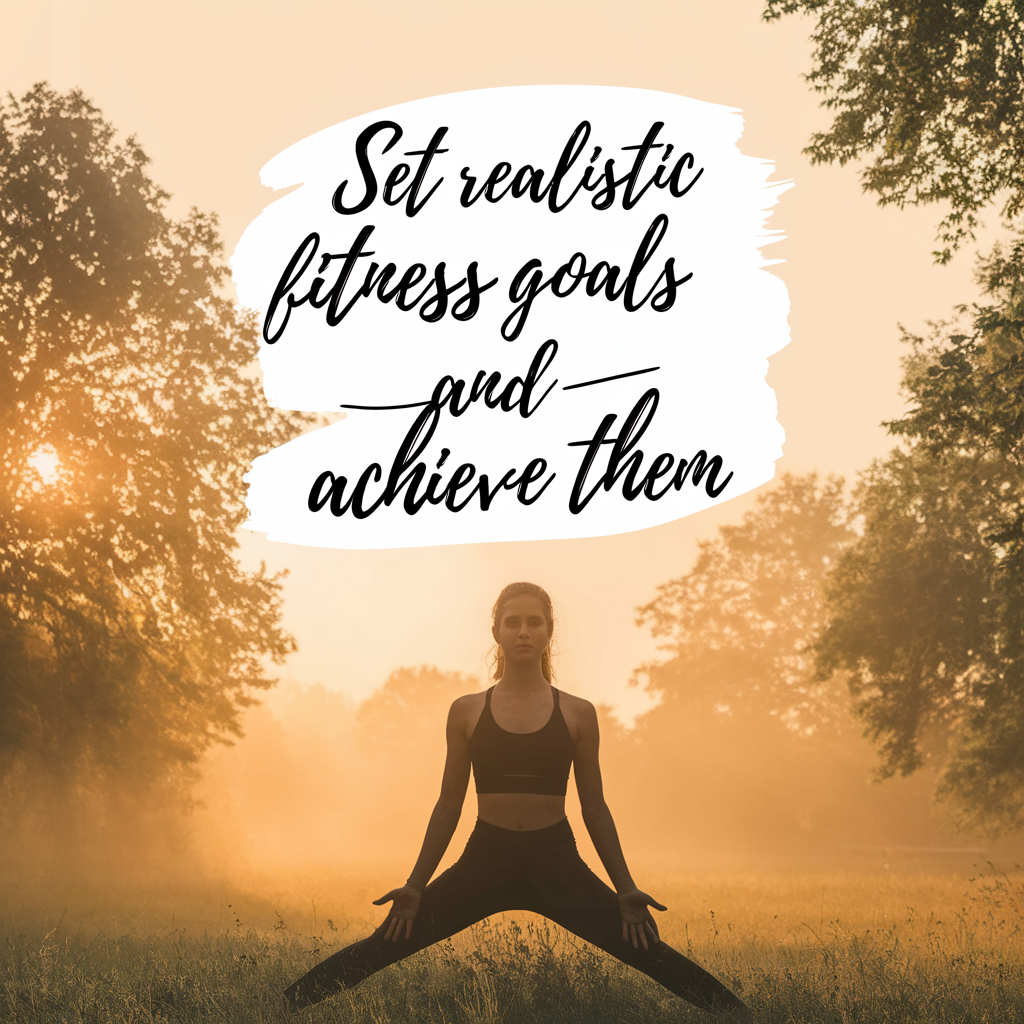How to Set Realistic Fitness Goals and Achieve Them
Let’s face it: the New Year’s resolution to finally shed those stubborn pounds or get fit often fizzles out faster than a cheap balloon at a birthday party. But what if setting realistic fitness goals could make all the difference? The truth is, it’s not just about wanting to be healthier; it’s about crafting achievable targets that keep you motivated and on track. So, how do you go about this? Buckle up, because we’re diving deep.
The Importance of Realistic Goals
Setting realistic fitness goals is crucial for several reasons. Firstly, unrealistic expectations can lead to disappointment. I remember a time (I’m sure we all do) when I thought I could run a marathon after only two weeks of training. Spoiler alert: I didn’t even get past the first mile without feeling like I was dying. Secondly, realistic goals foster a sense of accomplishment. When you hit a target, no matter how small, it boosts your confidence and motivates you to keep going.
Understanding the SMART Framework
One widely accepted method for setting effective fitness goals is the SMART criteria. No, not “smart” like your high school valedictorian; I’m talking about an acronym that stands for Specific, Measurable, Achievable, Relevant, and Time-bound. Let’s break it down:
- Specific: Be clear about what you want to achieve. Instead of saying, “I want to get fit,” specify, “I want to run 5 kilometers without stopping.”
- Measurable: Quantify your goals. A number gives you something concrete to work towards.
- Achievable: This one’s a biggie—set goals that challenge you but are still within reach. If you’ve never lifted weights before, don’t aim to deadlift 300 pounds in a month.
- Relevant: Your goals should align with your broader fitness aspirations. If you want to build muscle for strength training, a goal to increase your flexibility might not be the best fit.
- Time-bound: Set a deadline. “I will run 5 kilometers in under 30 minutes within three months” gives you a timeline to work with.
Identifying Your Starting Point
Now that you have the framework in mind, it’s time to assess where you currently stand. This can be a daunting task, especially if you’ve been avoiding the gym like the plague (no judgment here!). Start by taking an honest look at your current fitness level. Here are some steps to help you get started:
- Self-assessment: Take note of your strengths and weaknesses. Are you a cardio machine but struggle with strength training? Or vice versa?
- Consult a Professional: If possible, consult a personal trainer or a fitness expert who can provide insights tailored to your specific needs.
- Set Baseline Measurements: Document your current weight, measurements, and any relevant fitness stats.
Creating a Roadmap
Now, let’s get practical. Once you’ve identified your starting point, it’s time to create a roadmap to your goals. Think of this as your personal GPS for fitness. Without it, you might end up taking a detour through Fast Food Lane instead of heading towards HealthyVille.
Break your main goal into smaller, manageable milestones. For instance, if your goal is to run a half-marathon in six months, you might map out a plan like this:
- Month 1: Build up to running consistently for 20 minutes, three times a week.
- Month 2: Increase your running time to 30 minutes.
- Month 3: Start introducing longer runs on weekends (like, say, 5 kilometers).
- Month 4: Aim for a 10-kilometer run.
- Month 5: Include speed training to improve your pace.
- Month 6: Taper your training before the big day—it’s time to shine!
Finding Motivation
Okay, so we’ve got our goals, our roadmap, and a healthy dose of optimism. But what about motivation? If only it were as simple as slapping a motivational quote on your fridge and calling it a day. Let’s explore some strategies to keep that fire burning:
Accountability Partners
Sharing your goals with a friend or family member can significantly increase your chances of success. It’s like having a personal cheerleader (minus the pom-poms—unless you want them, of course). You could even join a fitness group or a class where everyone is working toward similar goals.
Tracking Progress
Keep a journal or use fitness apps to track your progress. There’s something incredibly satisfying about checking off boxes or logging those workouts. It’s like playing a video game, where every completed level gets you closer to the ultimate boss battle—your fitness goal.
Overcoming Setbacks
Let’s be real here: setbacks are part of the journey. Whether it’s an injury, a busy schedule, or just plain old life getting in the way, it’s important to understand that these bumps in the road are normal. What matters is how you respond to them.
When I sprained my ankle attempting a new workout challenge (yes, not my brightest moment), I had to pivot. Instead of wallowing in self-pity, I focused on upper body workouts and maintaining my nutrition. It’s all about adapting and finding alternative ways to keep moving forward.
Staying Flexible
Flexibility in your goals is crucial. If you find that your initial targets are too ambitious or are causing undue stress, don’t hesitate to adjust them. Fitness isn’t a race; it’s a journey—one that should be filled with joy, not dread.
Celebrating Success
When you achieve a goal, no matter how small, take a moment to celebrate. Treat yourself (maybe not with a double cheeseburger, but hey, a nice smoothie or a new workout outfit could work). Recognizing your achievements reinforces positive behavior and keeps you motivated for the next challenge.
Reward Systems
Establishing a reward system can be a powerful motivational tool. You might reward yourself with a spa day, a new book, or a weekend getaway after reaching a significant milestone. Just make sure your rewards align with your overall goals—pizza parties every week may not be the best choice if you’re trying to eat healthier!
Staying Informed and Adapting
The fitness landscape is always evolving, with new trends, scientific research, and technologies emerging regularly. Staying informed can help you adapt your goals and methods to what works best for you and your body. Read articles, follow fitness experts on social media, and attend workshops or classes that pique your interest.
Listening to Your Body
This one’s key: listen to your body. It has a way of communicating what it needs. If you’re feeling unusually tired or sore, it may be time to back off and allow for recovery. On the flip side, if you’re feeling strong and energized, maybe it’s time to push yourself a little harder.
Final Thoughts
Setting realistic fitness goals is not just a one-time thing; it’s an ongoing process that evolves as you do. Whether you’re a beginner or a seasoned pro, the principles of goal-setting remain fundamentally the same. Remember, the journey to fitness isn’t a sprint—it’s a marathon (and I mean that in the most encouraging way possible). Embrace each step, learn from the setbacks, and celebrate the victories, no matter how small they may seem.
So, as you lace up those sneakers and step out into the world, keep your goals in sight but remain flexible and kind to yourself. After all, it’s about progress, not perfection. Now go out there and crush those goals!







